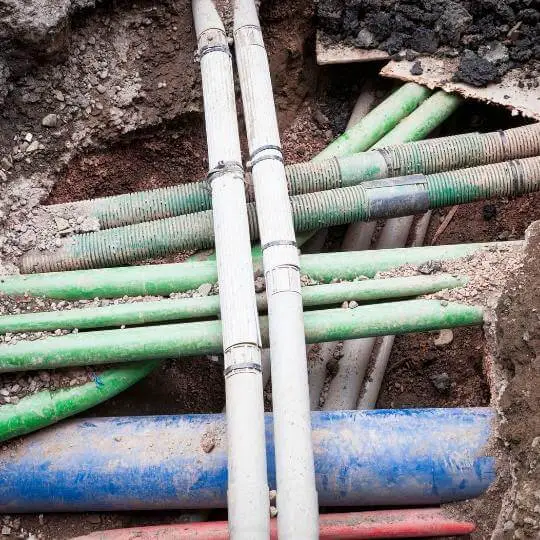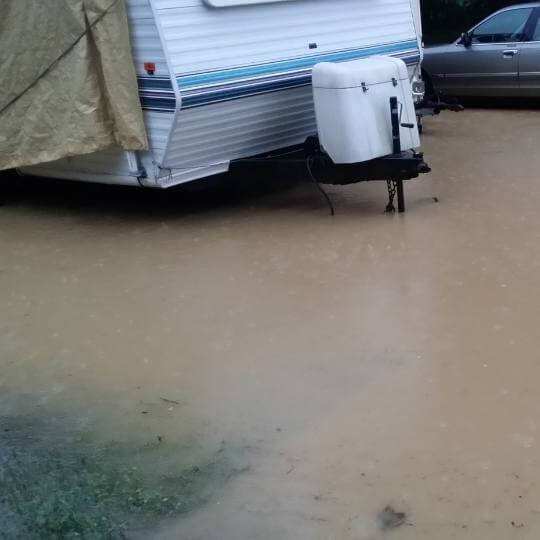For the sake of understanding how effective the treatments we employ can be, it helps to know how fast do tree roots grow in sewer pipes.
After all, if we get ahead of the problem any negative effects it causes can be reduced by a rather decent margin. Never underestimate a timely countermeasure’s effectiveness in dealing with a problem especially one tied to sewer pipes.
So how fast do tree roots grow in sewer pipes?
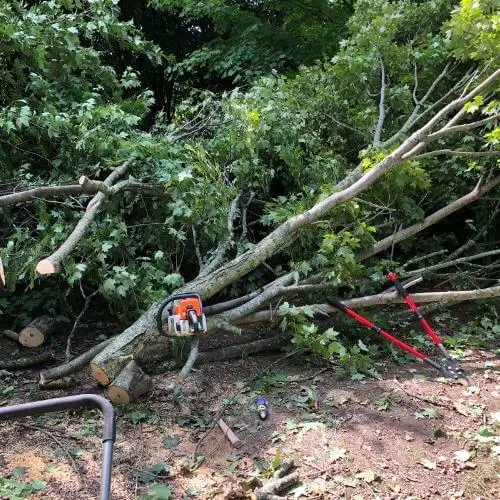
The tree roots are in a constant state of growth, rarely interrupting the process. Even if the tree itself is suffering a lack of nutrients, tree roots will keep growing in order to provide better nutrition to the tree itself.
Once tree roots enter the sewer pipe through a crevice found in the pipe, they will grow exponentially faster. This is due to the additional nutrients and moisture present within the pipe. The tree root can enter the pipe in a matter of weeks, once in there, they will spend their time growing regularly.
The actual pace depends from plant to plant. However, the tree roots don’t stop being a threat once removed. This is due to their ability to burrow right back into the pipe. [1]
The process of repeated invasion can take as little as a month to finish but it could also take a few years. Usually, the speed with which the tree root enters our sewer pipe again depends on the way we treat the initial invasion and the long-term treatment of the sewer pipe. Depending on how extensive our treatment is, the tree roots may not pose any issues for years in the future.
How to keep tree roots away from your pipes?
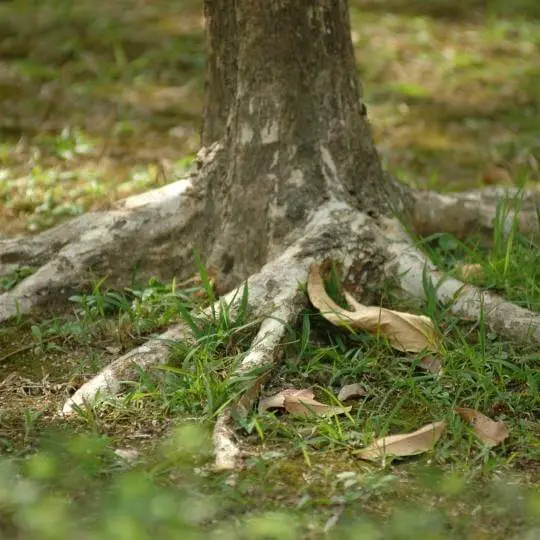
There are a few treatments to consider if you want to postpone any potential new invasions by surrounding tree roots. Below, we will showcase some really useful, commonplace, root killers that you could get some use out of.
These substances can vary greatly in their usual purpose yet share the purpose of killing roots. While there are some custom-made root killers whose sole purpose is dealing with these invasions, you can try DIY home solution first. Choices are many, the real question is which one fits your situation the most.
Rock salt
Believe it or not, one of the easiest ways to kill off tree roots is by flushing rock salt into your toilet. You can use standard rock salt used for covering driveways even. The treatment is gradual and depends on how serious your problem is.
If you are dealing with initial, small roots in sewer line problems, you can flush a single cup of rock salt. Repeat the process every few months to keep the roots away from your pipe.
On the other hand, you may have a much more developed issue with tree roots. In this case, the rock salt treatment will need a far more extreme approach. Try slowly flushing around two pounds of rock salt, usually in increments of a cup or smaller.
After flushing it all down, don’t flush the toilet for about 12 hours if possible. That way the treatment is going to work far better.
Do be careful as this treatment while it’s safe for pipes it could kill all nearby roots, so don’t use it if you wish to preserve the tree or have plants that don’t pose a threat to your pipes located near the problem root. [2]
Copper sulfate
For a simple herbicidal solution, we recommend using copper sulfate. Copper sulfate is a fully natural herbicide that can be used for just about any herbicidal purpose.
It looks very similar to regular salt, with the greatest distinction being its blue color. You should apply even less of this substance to your pipes, flushing only half a cup of copper sulfate down the toilet.
However, do contact your local sewer district. Not all districts allow the use of copper sulfate so it’s better to check if our area supports its use. You should also avoid using them in septic pipes. Exclusively utilize copper sulfate through your toilet. Copper sulfate could damage and corrode other types of pipes, causing more problems.
Foaming root killers
The foamy herbicides are one more solution we can employ when dealing with tree roots in sewer pipes. The foamy root killers contain Diclobenil which excels at destroying roots before they can cause further issues. [3] This substance also hampers new tree roots from growing in our pipes. The foamy root killer takes about 2 to 7 days to clean out the line.
The slightly troublesome part is that foamy root killer has to reach tree roots to work. This means that long stretches of tree roots could survive the initial treatment if the overall invasion has taken a lot deeper hold.
On the other hand, it’s still a very simple tool to apply. Just flush the entire product down the toilet and refrain from using the toilet until it does its work. Depending on your specific situation either foamy root killer or copper sulfate will do.
However, root killers may not work for every concern of tree root invasion. For more elaborate and serious issues, you may need to dig out the entire pipe and have the tree roots extracted directly.
This can even lead to entire pipe replacements and repairs. The price of which goes up with each foot of sewer pipe your plumbing professionals need to replace. In this case, it’s best to know whether we have issues with tree roots in the sewer line covered by insurance.
Sewer line insurance coverage

When insuring our home, it’s not impossible to overlook the sewer line as one of the parts that needs coverage. Even if we have homeowners insurance it will not cover sewer pipes. [4]
After all, the costs can really build up when something goes wrong with the pipe. That’s why it’s good to know what’s covered under our sewer line insurance.
To put it succinctly, most insurance providers in this area will cover a few key expenses you may find yourself in: deteriorating pipes, pipe excavation, inspection, pipe repairs, pipe replacement, and establishing greenery after works are done.
So yes, tree roots in sewer line are covered by insurance of this type. We will happen upon certain situations where sewer pipe damage can be incompatible with the insurance we purchased but it’s more likely than not that these situations will be absent from the contract as is.
When signing up for sewer pipe insurance, make sure to read the entire contract and pay attention to any exceptions that aren’t to your liking.
Symptoms of tree roots in sewer line
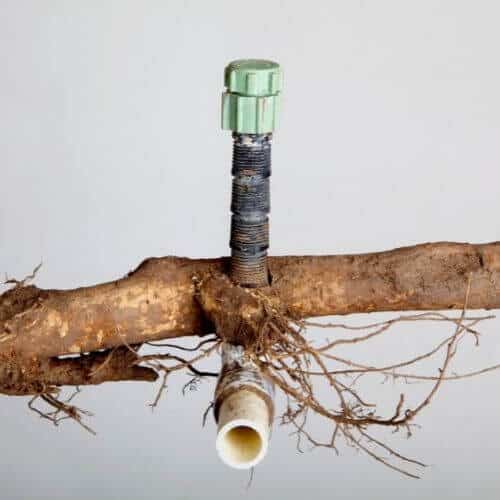
The symptoms of tree roots invading your pipes can help you preemptively resolve issues, preventing the problem from getting out of hand. So without further ado let’s look into some telltale signs of tree root issues.
- Water drains slowly
In case your drains aren’t working that well, there’s a high chance your sewer lines have been plugged by tree roots. As they grow, they will lower the pressure within the pipes, making it hard for water to reach your home as well as leave it.
While there could be other causes for slow drains, you should take them as a sign that something is off. Use this opportunity to call in an inspection, securing your pipes’ future.
- Puddles of sewer water
If your yard is forming puddles with a repugnant smell, they could be coming straight from your sewer. As roots burrow into the sewer pipes they spread out the leaks and cracks previously found on your pipes.
These can expel quite a large amount of water, which will then pool in your yard. The issue could get so bad that the entire pipe bursts, in which case it’ll be more than a puddle flooding your yard.
- Sinkholes
As sewer pipe leaks get worse, the soil will start to erode from all the water. After a while, you’ll start to get sinkholes in your yard. The sinkhole could range from a health hazard to a structural disaster waiting to happen. The closer these sinkholes are to your foundation the higher the chances the latter will happen.
- Bad smell
Due to the amount of damage tree roots inflict, it’s very easy for the pipe to start spilling not only water but smell out of its holes. The repugnant smell of a cracked sewer pipe is hard to mistake.
It’s also one of the most telltale warnings before a disaster happens. The smell can appear both inside and outside of your home, so no area is really safe from it.
Read Also: Pros and Cons of Rid X
Conclusion
When all is said and done, there are quite a few things to consider when dealing with tree roots. They may seem like a simple problem at first, causing minor issues through our household. However, if they are left to grow and develop, they can become extremely pricey to remove.
The tree roots are bound to destroy pipes or even cause issues to the foundation of the house through water damage. Best way is to use commercial root killer.
Their overall impact on our home will be firmly felt. On the up side, this makes them easy to distinguish. The symptoms of tree roots growing into our pipes can be discerned easily. Unfortunately, the issue will remain and grow if we don’t take immediate and frequent actions against it.

Michael Davis is a heating & plumbing expert who currently works as independent contractor in SC. He also writes for Plumbertip.
For almost 10 years he worked on various plumbing tasks across South Carolina.
